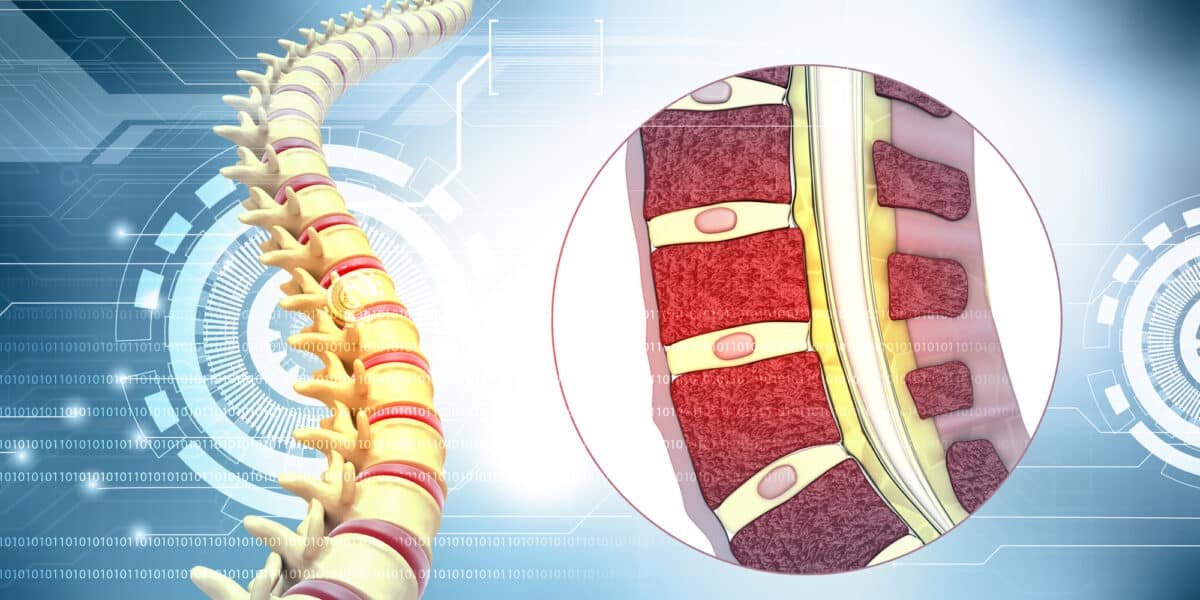BACK PAIN

Low back pain simply means pain in the loin area, although several times the pain can also extend to the pelvis and buttocks. In contrast, sciatica is the pain that extends along the thigh, gastrocnemius to the foot. It is a very common condition, four out of five people will experience lower back pain at some point in their lives. In cases where the pain persists for a long time, it is important for the patient to seek help from their doctor.
Back pain can be caused by many different causes, several cases of acute back pain, mainly in younger people, are due to some form of damage to the soft tissues (muscles and ligaments) of the lower back, something like a contusion, after lifting weights, sudden movement or sports activity.
A patient who already suffers from low back pain may feel their pain worsened by:
- the extended seat in the same position
- the driving
- lifting a heavy weight the wrong way
- prolonged bending forward (e.g. vacuum cleaner)
- mental stress
- the lack of exercise
Conservative management is the most common, surgical solution is needed in very few cases (probably less than 1% of all low back pain cases).
Common Symptoms
It is important to recognize the key signs that could indicate low back pain.
- Pain located in the lumbar region of the spine is the main symptom. Typically, this pain includes lower back stiffness, muscle tension and pain. In the worst cases, mobility can be compromised.
- The pain is localized, meaning it is confined to a small area.
- Limited movement of the spine can be a symptom, such as when you try to bend over or lean back.
- Another indication of low back pain may be a sharp pain in the lower back that may radiate to the buttock, groin, or back of the thigh.
- If the pain involves numbness in the buttocks, back or leg it is known as sciatica. This happens when the sciatic nerve is irritated.
- Swelling or inflammation of the back or leg can be a warning sign.
- Lower back pain when you sneeze or cough can also indicate low back pain.
Causes
Sometimes, the cause of back pain is difficult to identify, even after comprehensive medical examinations. Lumbar low back pain can be caused by several factors, but the main reason is overuse of the lower back and sudden lifting of a heavy load.
Lumbar sprains can be the result of excessive bending or other repetitive motions involving the lower back. Osteoarthritis and spondylosis (spondylosis) can be factors.
Other causes may include a slipped or herniated disc, osteoporosis, spinal stenosis or spinal nerve compression, scoliosis, and malignant or benign spinal tumors.
Prevention
Back pain can be a common and debilitating issue, but taking preventative measures can greatly reduce the risk of it occurring or worsening. Here are key strategies to prevent back pain:
- Maintaining good posture: Practice good posture while sitting, standing and standing up. This helps distribute the load evenly across the spine, reducing the risk of strain and discomfort.
- Regular exercise: Engage in a balanced exercise routine that includes activities to strengthen the muscles that provide support to the spine. This can include exercises such as yoga, swimming and walking.
- Weight management: Maintain a healthy weight to reduce pressure on the spine. Excess weight, especially around the abdominal area, can contribute to back pain.
- Ergonomic work environment: Make sure your workplace is ergonomically designed. Use chairs and desks that support good posture and take breaks to stretch and move throughout the day.
- Correct lifting techniques: When lifting objects, bend at the knees, keep the back straight and lift with the legs. Avoid twisting the spine when lifting, as this can increase the risk of injury.
Treatment
If back pain has already become a concern, various treatment options aim to relieve pain, improve mobility and support overall spinal health. Here are the key ingredients of back pain treatment:
- Pain medications: Over-the-counter pain relievers, such as nonsteroidal anti-inflammatory drugs (NSAIDs), can be used to manage pain and reduce inflammation.
- Physical therapy: A customized physical therapy program may include exercises to strengthen muscles, improve flexibility, and address specific issues that contribute to back pain.
- Massage: Techniques such as massage can help relax tight muscles and improve overall circulation to the affected area.
- Lifestyle modifications: Implementing lifestyle changes, including stress management, proper nutrition, and regular exercise, can contribute to overall back health and reduce the risk of recurring pain.
Treatment options
Treatment varies based on many different factors, such as the patient’s age, weight, activity level, and more. The following are treatment options:
- anti-inflammatory for temporary pain relief
- hot or cold compresses
- exercise and gentle stretching
- yoga
- acupuncture
- spine chiropractic
- physical therapy
- surgery
- Category
- ΠΑΘΗΣΕΙΣ ΕΝΗΛΙΚΩΝ

